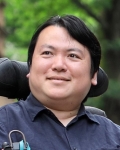- HOME
- Research
- Researcher's Profile
- Shinichiro KUMAGAYA
Researcher's Profile

- Professor
- Shinichiro KUMAGAYA
- Tojisha-Kenkyu
- Division of Co-Creation for Inclusive Society
- kumashin
 bfp.rcast.u-tokyo.ac.jp
bfp.rcast.u-tokyo.ac.jp
- Tel
- 03-5452-5063
Biography
| March 2001 | Graduation from the Faculty of Medicine (Department of Medicine), The University of Tokyo (UTokyo) |
|---|---|
| May 2001 | Resident, Pediatrics, UTokyo Hospital |
| June 2002 | Pediatrician, Chiba-Nishi General Hospital |
| August 2004 | Pediatric Cardiologist, Saitama Medical University Hospital |
| September 2009 | Withdrawal from the Doctoral Program with the Completion of Course Requirements, Graduate School of Medicine, UTokyo |
| November 2009 | Project Lecturer, RCAST, UTokyo |
| July 2014 | Ph.D, The Department of Advanced Interdisciplinary Studies, Graduate School of Engineering, UTokyo |
| April 2015 | Associate Professor, RCAST, UTokyo |
| April 2024 | Professor, RCAST, UTokyo |
Research Interests
The term tojisha kenkyu consists of two Japanese words: tojisha and kenkyu. Tojisha(s) refers to "interested person(s)," such as disabled persons or patients. Kenkyu means "study." Therefore, tojisha kenkyu literally translates as "study by interested persons themselves." It refers to a unique activity of self-study by persons with mental health problems or other problems in which they study their hardship with their peers. It started among people with schizophrenia and gradually spread among a range of conditions—addiction, cerebral palsy, and developmental disorders. We focus on three aspects of tojisha-kenkyu: abduction and testing, group facilitation methods and restorative effects. To put it more concretely:
1. Hypothesis generation through tojisha kenkyu and its testing: Based on Tojisha-kenky, we hypothesize that "difficulties to integrate local motionperception information from internal and external milieu into global schema" is the fundamental characteristic of autism, which explains a broad spectrum of experiences and difficulties, from an intrapersonal motionperception level to an interpersonal social level, in a unified fashion. Now we are going to validate the hypothesis through several observational and interventional experiments, including the clarification of sound processing mechanisms of autistic people and audiological intervention for hyperacusis, and research on the pain processing mechanism of autism.
2. Conversation analysis and natural linguistic processing of narratives produced in tojisha kenkyu: Using a conversation analysis and natural linguistic processing, we try to clarify the pragmatic rules adopted in the practice of Tojisha-Kenkyu, and the relation between the rules and narratives produced there. In addition, we try to create the automatic system which extracts and validates hypotheses from Tojisha-Kenkyu by use of the crowdsourcing method.
3. Clinical effectiveness research on tojisha kenkyu: In order to make it clear whether Tojisha-kenkyu itself has a therapeutic effect on participants in terms of their well-being and recovery, we are conduction clinical effectiveness research.
- Tojisha-Kenkyu Network (http://toukennet.jp/)
- Necco Tojisha-Kenkyu Group (http://necco-tk.com/)
- Roundtable on possibilities of self-description by "patients" (http://mednlp.jp/patients_life/)
- Discussion about interdiciplinary research on narratives of Tojisha
(https://sites.google.com/site/asdanditssurroundings/)

